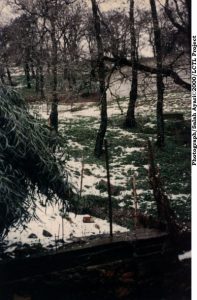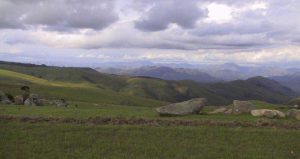
African environment: the Sahara Desert
A drought in the High Middle Ages
Another very bad drought hit Africa in the Middle Ages, in 963 AD. Again, the drought led to the collapse of the government in Egypt, and brought the Fatimids into power. This period of drought lasted until 1200-1202 AD, and many Egyptian people died, especially if they were city people and not farmers. This drought was probably part of the climate change known as the Medieval Warm Period that also affected Europe, Asia, and the Americas. South Africa was also warmer during the Medieval Warm period, and this probably affected the movement of people in the area.

African environment: Snow in northern Tunisia
The Little Ice Age in Africa
A second, much more serious drought in the area just south of the Sahara Desert (called the Sahel) and across West Africa began about 1300 AD, and lasted until the 1850s. This drought corresponds with the Little Ice Age in Europe, Asia, and the Americas: in Europe, the weather was wet and cold, but south of the Sahara it was extra hot and dry.

Olive orchard in Tunisia
In both Europe and Africa, many people went hungry when the barley didn’t grow. In West Africa, there were floods: the Niger river repeatedly flooded the city of Timbuktu (in modern Mali) at this time.

The rain forest

South Africa
All over southern Africa and Madagascar, on the other hand, the Little Ice Age brought cooling just as it did in Europe.
Ancient Egypt’s Environment
Early African Environment
More about Africa
Bibliography and further reading about the medieval African environment: